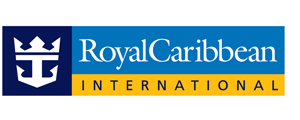What is the PLANETARY PUZZLER?
The Observatorium™ is the newest series of Escape Rooms launched by Royal Caribbean International onboard the newly “amplified” Independence of the Seas and Mariner of the Seas. Both ships recently underwent a massive renovation to the tune of over 100 million dollars per ship.
The Observatorium™ is a high-tech, fully immersive escape room experience. The concept for the Observatorium Saga is the brainchild of SVP, Entertainment Nick Weir, in collaboration with Puzzle Break, Design duo, Chicago Scenic Studios, David Warfel Lighting Design, and produced by Alison Frazier.
Players find themselves in an environment that transcends time and space, and features rich wood bookcases, alcove light boxes, and a magnificent 8-foot-long aluminum and steel telescope on a rotating platform. Once inside the Observatorium™, guests collaborate with friends old and new, as they attempt to find the clues, solve the puzzles and unravel the mystery before time runs out.
Puzzle Break, cofounded by Nate Martin and Lindsay Morse, the first American escape room company and creator of the first escape games on the high seas, designed the puzzles of the game, including clues that overlap and paths that trace the clues back to the source of the solution. Design Duo, comprised of production designers Gerry Hariton and Vicki Baral, crafted the specific elements of the game and brought Puzzle Break’s vision to life, and coordinated with Chicago Scenic Studios, Inc. on materials and concepts. Chicago Scenic fabricated and installed the finished product, while Chicago-based tech company Creative Technology integrated the digital components into the puzzle. Lighting design by David Warfel, Graphics by The Imagination House, and a custom soundtrack by David Roppolo culminate in a truly incredible guest experience.
Part of the design focus for “The Observatorium” was seamless integration – how to make the scenic environment blend into the puzzles while still leaving clues for game players to decipher.
As part of the design process, before fabrication was complete, Chicago Scenic recruited 120 people to test the escape room’s challenging puzzles. Over the course of four days, teams of at least four people ages 13 and older visited each room at least four times to determine whether Puzzle Break’s concepts were too easy or too difficult, and whether or not the puzzles could be completed in the desired time. Based on the testing results, the Puzzle Break team then made adjustments to ensure the finished puzzles were solvable, challenging, and engaging.
“Value engineering for this project was a challenging juggle to lower costs while ensuring that the integrity of the build and the longevity of the pieces were preserved,” Chicago Scenic Project Manager Doug Pokorny said. “I’m confident that the solutions we came up with for this project will survive the constant play while still following and surpassing the original aesthetics of the design.”
Pokorny said the team worked well together and it was their strong, open communication that drove the project forward. “It’s all about staying connected and sculpting trust,” Pokorny said. “Know your capabilities and use them to establish great working relationships.”
While much of the project took place in-house, Chicago Scenic sent a team of product managers, scenic painters, carpenters, and crew to install the escape room when the ship was in dry dock. Chicago Scenic’s team members, including job, leads Steve Hemphill, Mark Goeke, and Benny Morin, traveled to the Bahamas and Cadiz, Spain to reassemble the pieces of the escape room that they fabricated shipped weeks before. The space was tight and confined, but Chicago Scenic coordinated schedules with Royal Caribbean crews so each group accomplished their tasks on time.

